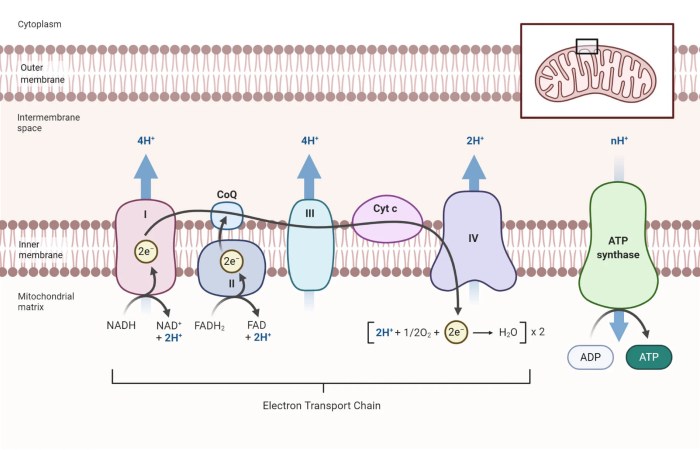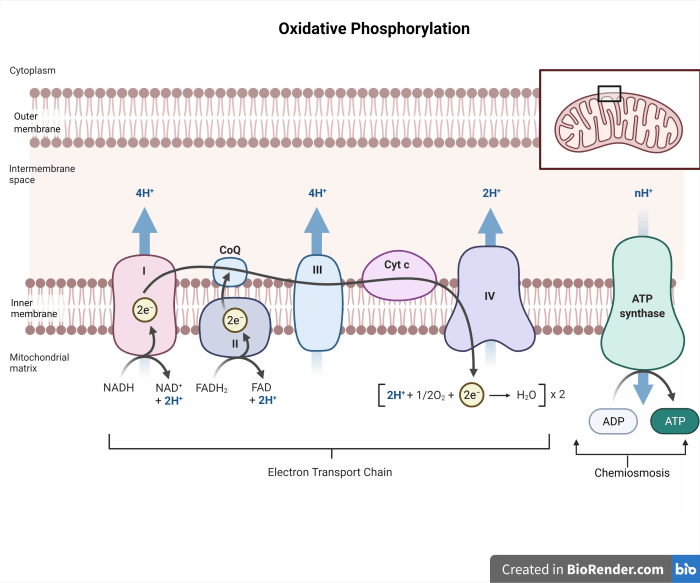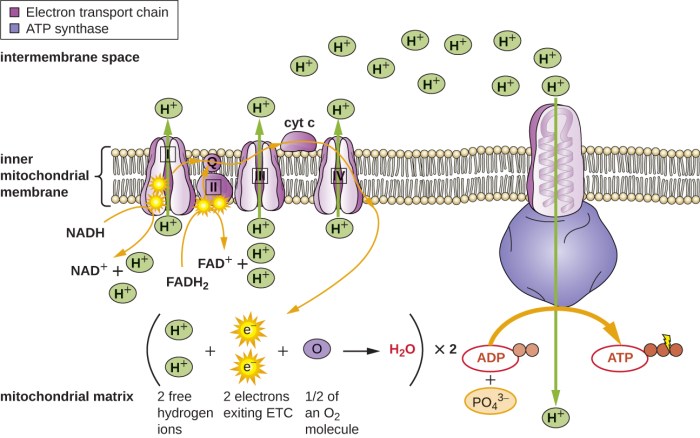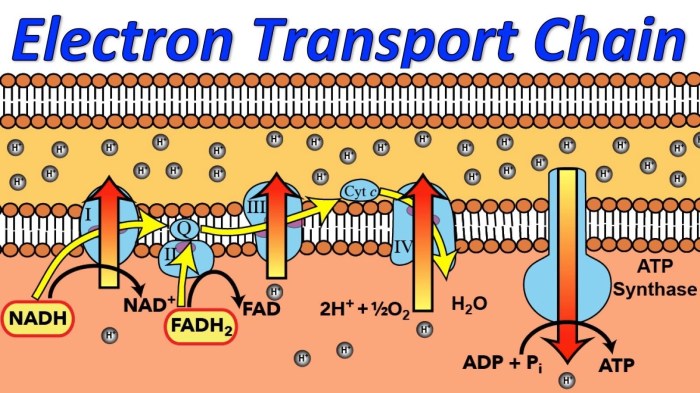Select the true statements about the electron transport chain. With its pivotal role in cellular respiration, the electron transport chain (ETC) stands as a fascinating and complex machinery that orchestrates the generation of ATP, the energy currency of life. Delving into its intricate structure, components, and mechanisms, we embark on a scientific voyage to unravel the secrets of this remarkable biological powerhouse.
The ETC, nestled within the mitochondria, serves as the final stage of cellular respiration, harnessing energy from nutrient molecules to produce ATP. Its intricate assembly of protein complexes and electron carriers orchestrates a symphony of redox reactions, facilitating the transfer of electrons and the establishment of an electrochemical gradient.
This gradient drives the synthesis of ATP through a process known as chemiosmosis, a testament to the ETC’s remarkable efficiency in energy conversion.
Introduction

The electron transport chain (ETC) plays a pivotal role in cellular respiration, the process by which cells generate energy in the form of ATP. Located in the inner mitochondrial membrane, the ETC is a series of protein complexes that facilitate the transfer of electrons from NADH and FADH2 to molecular oxygen, ultimately generating water.
This electron transfer process is coupled to the pumping of protons across the mitochondrial membrane, creating a proton gradient that drives ATP synthesis through chemiosmosis.
Key Characteristics of the ETC: Select The True Statements About The Electron Transport Chain.

Electron Carriers
The ETC utilizes a series of electron carriers to facilitate electron transfer. These carriers include flavoproteins (FMN and FAD), iron-sulfur proteins, and cytochromes (a, b, and c). Each carrier has a specific redox potential, allowing for the stepwise transfer of electrons along the chain.
Oxidative Phosphorylation
As electrons pass through the ETC, they lose energy, which is captured and used to pump protons across the mitochondrial membrane. This process, known as oxidative phosphorylation, generates a proton gradient that drives the synthesis of ATP through ATP synthase, an enzyme complex located in the inner mitochondrial membrane.
Chemiosmosis
The proton gradient generated by oxidative phosphorylation is essential for ATP synthesis. Protons flow back across the mitochondrial membrane through ATP synthase, driving the conformational changes necessary for ATP synthesis. This process, known as chemiosmosis, is the primary mechanism by which the ETC generates ATP.
Regulation of the ETC

Factors Regulating ETC Activity
The activity of the ETC is regulated by several factors, including the availability of substrates (NADH and FADH2), the proton gradient across the mitochondrial membrane, and the demand for ATP in the cell.
Response to Energy Demand
The ETC responds to changes in cellular energy demand by adjusting the rate of electron transfer and proton pumping. When energy demand is high, the ETC operates at a faster rate, generating more ATP. Conversely, when energy demand is low, the ETC slows down to conserve energy.
Inhibitors
Various inhibitors can modulate ETC activity. Cyanide and carbon monoxide, for example, bind to cytochrome oxidase, inhibiting electron transfer and ATP synthesis. These inhibitors are often used as experimental tools to study the ETC.
Disorders Associated with the ETC

ETC Defects, Select the true statements about the electron transport chain.
Defects in the ETC can lead to a variety of disorders, ranging from mild to severe. These disorders can affect individuals of all ages and can manifest in a wide range of symptoms, including muscle weakness, fatigue, seizures, and developmental delays.
Symptoms and Consequences
ETC disorders can have a profound impact on an individual’s health and well-being. Symptoms may include muscle weakness and fatigue, impaired cognitive function, and organ damage. In severe cases, ETC disorders can be fatal.
Treatments and Therapies
Treatment options for ETC disorders vary depending on the specific defect. Some treatments focus on managing symptoms, while others aim to correct the underlying genetic defect. Therapies may include medications, dietary modifications, and in some cases, stem cell transplantation.
Key Questions Answered
What is the primary function of the electron transport chain?
The primary function of the electron transport chain is to generate ATP, the energy currency of cells, through oxidative phosphorylation.
How does the electron transport chain contribute to the production of ATP?
The electron transport chain establishes an electrochemical gradient across the mitochondrial inner membrane, which drives the synthesis of ATP through a process called chemiosmosis.
What is the role of electron carriers in the electron transport chain?
Electron carriers, such as NADH and FADH2, shuttle electrons through the electron transport chain, facilitating redox reactions and contributing to the establishment of the electrochemical gradient.